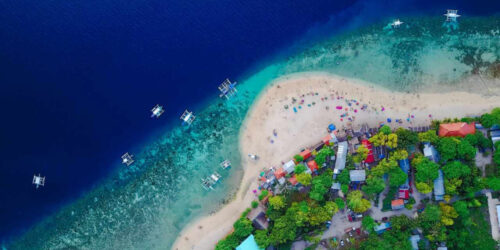
A High-Renewables Tomorrow, Today: Tokelau, South Pacific
Some of the most vulnerable places in the world to live in the face of climate change are islands. Rising sea levels, contaminated ground water, and increasing severity of storms are just some of the many threats to island communities. Many island residents also pay extremely high energy prices, due to limited domestic resources and the need to import fuel long distances. Switching to renewable energy can not only decrease fuel expenditures for many island populations, but can also show the world what can be done in the face of climate change.
Image courtesy of PowerSmart
Powered by the sun
Tokelau (population: 1,500) is an island nation in the South Pacific, made up of three atolls whose highest point is only five meters above sea level. Even though the New Zealand protectorate’s contribution to climate change is miniscule, it faces grave threats to its very existence. In 2011, at the Durban Climate conference, Foua Toloa, the head of Tokelau, said the island would be using 100 percent renewable energy by 2012. By October of that year residents accomplished their goal, becoming the first country in the world to produce 100 percent of its electricity from the sun.
Prior to 2012, Tokelau’s residents relied on three diesel-driven power stations, burning 200 liters per day at a cost of nearly $800,000 per year. Tokelauans only had electricity 15 to 18 hours per day. They now have three solar photovoltaic systems, one on each atoll. The 4,032 solar panels (with a capacity of around one megawatt), 392 inverters, and 1,344 batteries provide 150 percent of their current electricity demand, allowing the Tokelauans to eventually expand their electricity use. In overcast weather, the generators run on local coconut oil, providing power while recharging the battery bank. The only fossil fuels used in Tokelau now are for the island nation’s three cars.
New Zealand advanced $7 million to Tokelau to install the PV systems. But with the amount of money saved on fuel imports the system will pay for itself in a relatively short time period (nine years with simple payback). The successful project even inspired a video game, Coconut Sunshine, in which the player is in charge of the nation’s finance and energy policies. The goal is to build more solar and coconut oil plants to earn money from selling excess energy in order to pay off the debt before the year is out.
Sending a message to the world
While one of the main impetuses for the switch to renewables was economic—to avoid huge fuel expenses—it wasn’t the only impetus. Living with the impacts of climate change—droughts, hurricanes, and contamination of ground water—was a factor as well. In 2011 Tokelau had to import water, a first in the island’s history. Tokelauans now take workshops in rainwater collection, owing to the scarce availability of freshwater due to rising sea levels.
While the island’s renewable energy systems will only keep 950 tonnes of carbon dioxide out of the atmosphere each year, a drop in the bucket as to what is needed to combat climate change, Tokelauans are hoping the rest of the world will follow their example. “We stand to lose the most of any country in the world due to climate change and the rising sea levels,” Toloa stated at the Durban Climate Conference, “so leading the way by making the highest per person investment in the world is a message to the world to do something.”
Islands around the world are turning to renewables to meet their energy needs. Other 100-percent-renewable-powered islands include Floreana in the Galapagos (population: 100) and El Hierro in the Canary Islands (population: 10,000+). Other islands with 100-percent-renewable-energy goals include:Cape Verde, Tuvalu, Gotland (Sweden), and all 15 of the Cook Islands. In the U.S., Hawaii is leading the way, ranking second in the nation for installed solar watts per person, with more than 1,000 megawatts of renewable projects in service, under construction, or awaiting approval.
Paving the way for the rest of the world
Many disbelievers argue that high penetrations of renewable energy aren’t practical for larger grids, and would jeopardize the reliability of our electricity system. One by one, island nations are proving the opposite is true. Generating electricity from an increasingly diverse array of sources makes their systems more reliable, not less so. While these systems require the islands to pay an upfront premium for assets like sophisticated controls and energy storage, these devices quickly pay for themselves given the high costs islands face to import diesel. This dynamic makes these hybrid microgrids practical for islands today, while the declining costs of these technologies will quickly make these technologies cost competitive on the mainland as well.
By switching to renewable energy, island nations reduce their reliance on imported fuels, keep money in the local economy, provide their residents with reliable power, and lower their carbon emissions. They can also serve as “test beds” for adoption of new technologies and models of what can happen on a larger scale. “It’s a lot easier to implement a high penetration of renewables on a small island,” according to Peter Lilienthal, founder and CEO of HOMER Energy, a company providing software and services to the international renewable distributed energy market. “But it’s absolutely scalable. You learn how to do things on a small scale first. Doing solar and wind at high penetration levels, there’s a lot of learning that needs to happen.” And island nations are helping us learn what needs to be done.